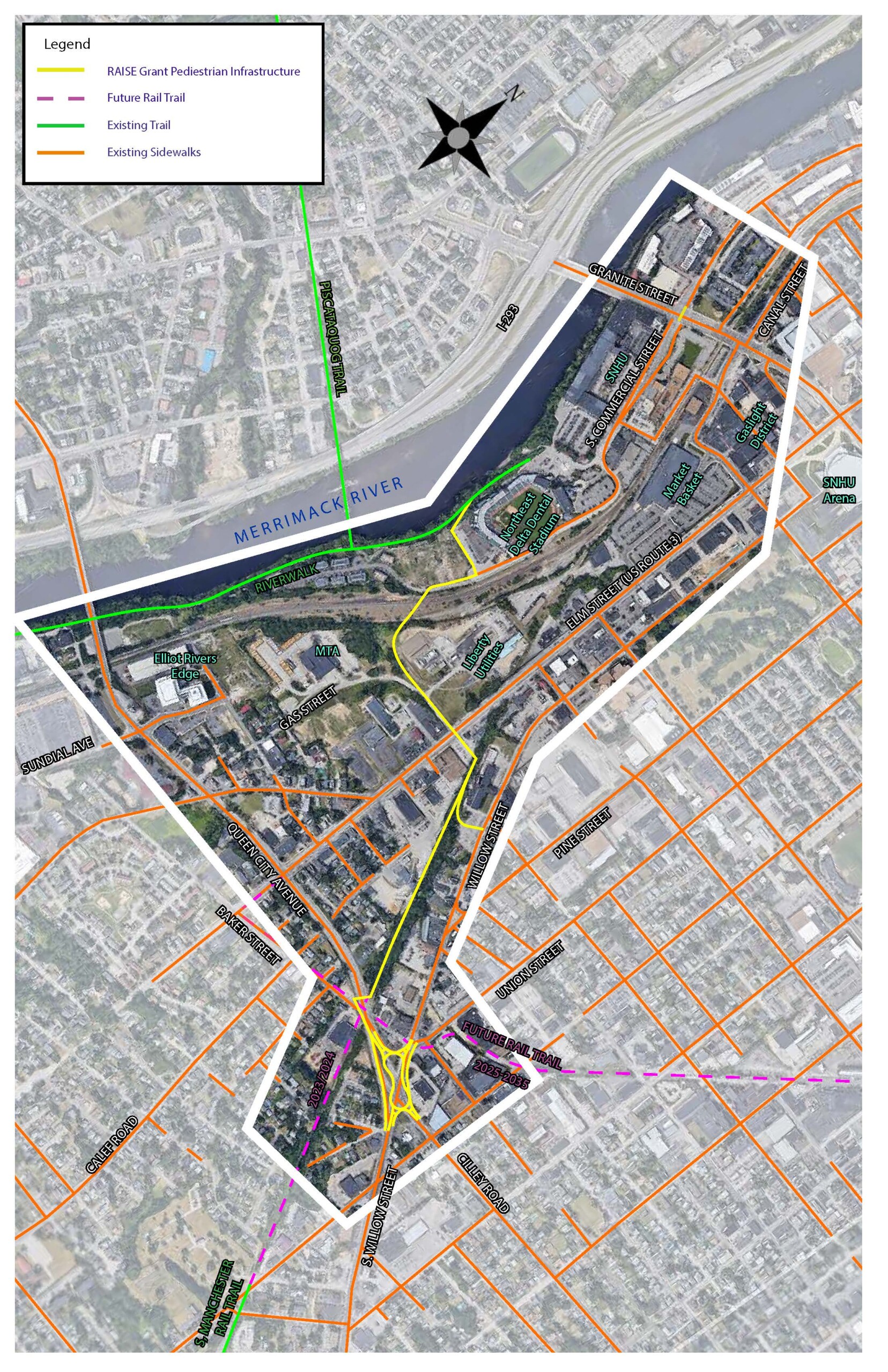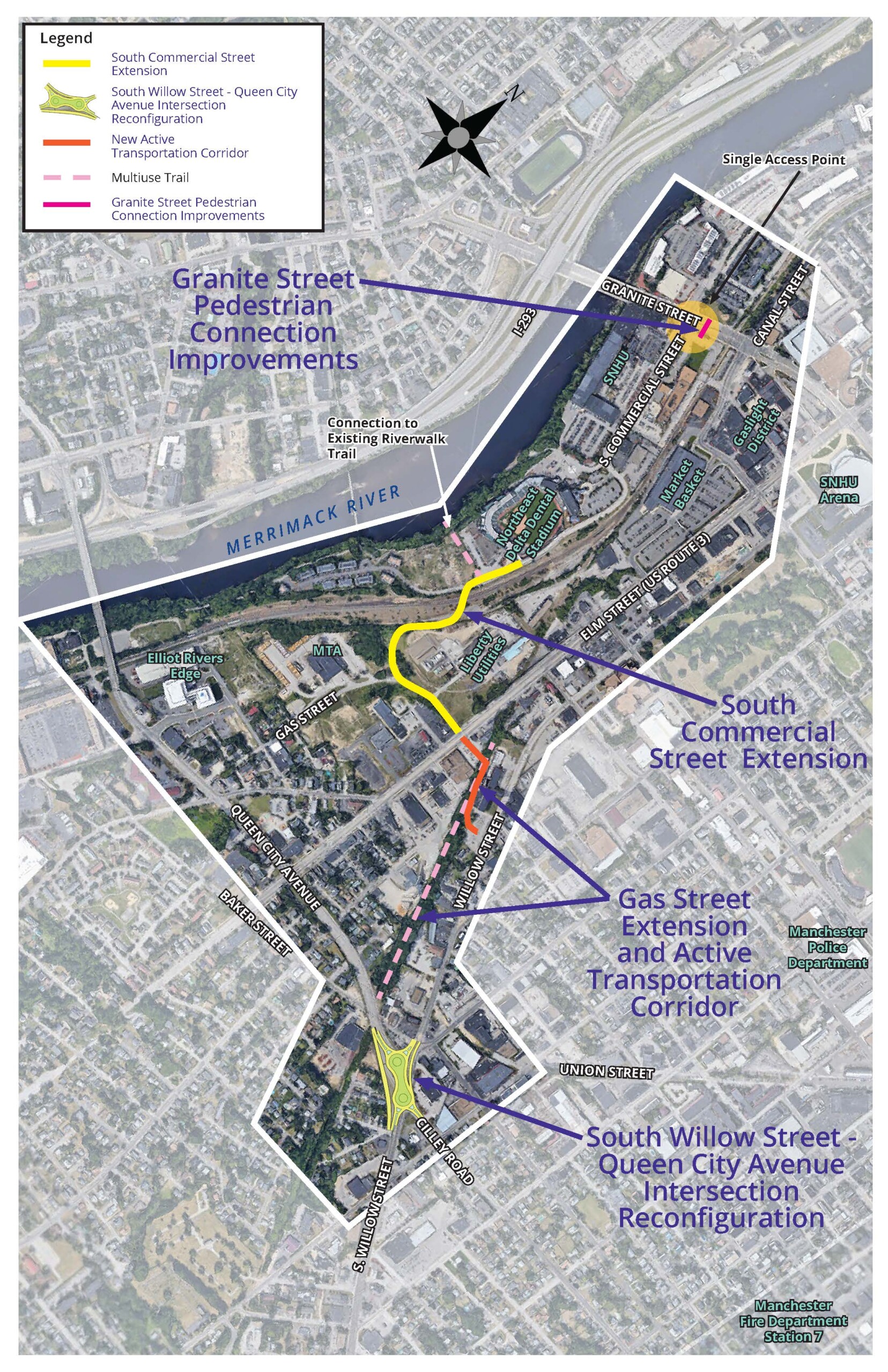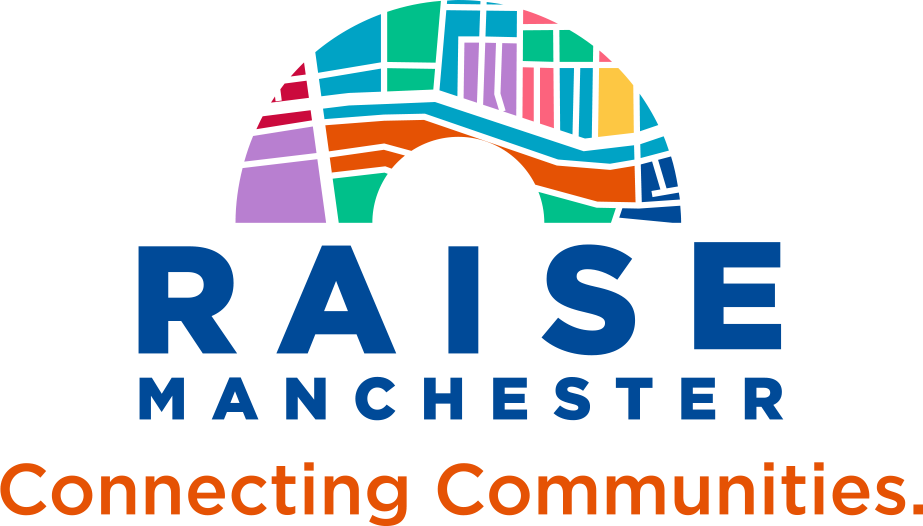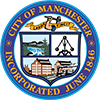The four main components of RAISE Manchester: Connecting Communities are:
- A new pedestrian bridge over Granite Street to connect Commercial and South Commercial streets.
- A new roadway called “South Commercial Street Extension” and multimodal bridge over the CSX railroad tracks behind the Delta Dental Stadium to improve the connection between the east and west sides of the tracks, alleviate traffic congestion on Granite Street during peak times and provide alternative access to Elm Street. This will also include a shared-use path for cyclists and pedestrians.
- A new roadway connector and multimodal bridge called “Gas Street Extension” between where South Commercial Street Extension meets Elm Street that will cross over the abandoned railroad right-of-way to Willow Street. In conjunction, the city will convert the railroad right-of-way to a paved rail trail for bicycle and pedestrian use.
- A “peanut roundabout” at the South Willow Street and Queen City Avenue intersection, replacing a signalized intersection, to improve mobility and safety at this location.
Granite Street Pedestrian Bridge
A fully accessible pedestrian bridge will be located just east of the Commercial Street and Granite Street intersection.
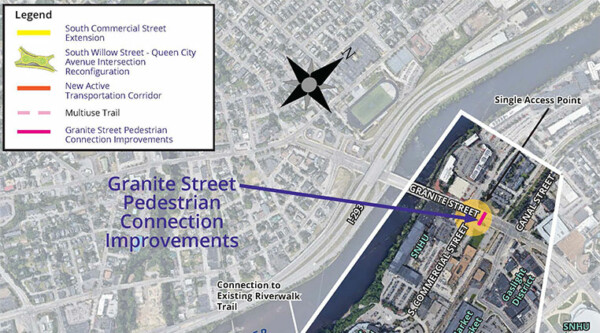
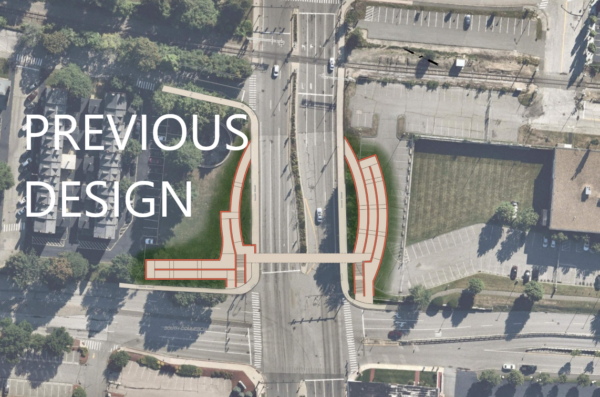
UPDATED GRAPHICS OF REVISED DESIGN:
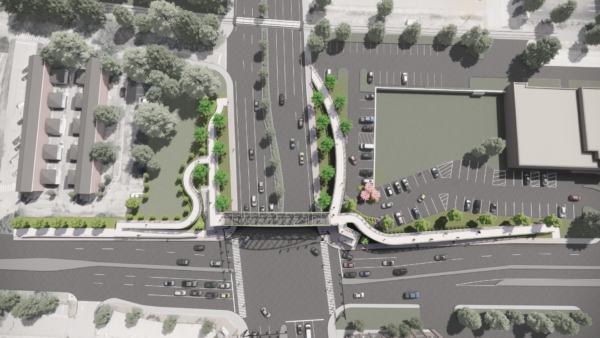
Benefits include:
- Improved safety by elevating pedestrians crossing above seven lanes of dense urban traffic
- Safer access to major places of employment (SNHU/WMUR) and events (Fisher Cats/SNHU Arena) and hotels (Hilton Garden Inn)
- Accommodates increasing pedestrian traffic at this intersection (600 daily from 7am to 7pm)
- Fully accessible ramp access
- Improved signal operation at intersection of Granite and Commercial Streets
- Reduced emissions from idling vehicles
Improvements Based on Public Input:
The City of Manchester has made a number of improvements to the design of the Granite Street Pedestrian Bridge in response to public input we received during the December 2022 public meeting, subsequent meetings with stakeholder groups and through our website. The previous design, pictured below, was presented to the public in December 2022.
The new design, pictured above, features longer, more gently sloping ramps which do away with hard turns users said would be difficult to navigate. Cyclists will still have options to use the new bridge or to cross at street level using travel lanes. This bicycle movement is also facilitated by the new video detection systembeing implemented as part of the Granite Street adaptive signals project at this intersection.
Based on feedback that the ramps were too narrow, we widened the ramps and the pedestrian bridge itself by about two feet.
And in a nod to Manchester’s history, we designed the pedestrian bridge and its arch structure to resemble the former Notre Dame Bridge, an iconic, green-steel bridge that spanned the Merrimack River from 1937 to 1989.
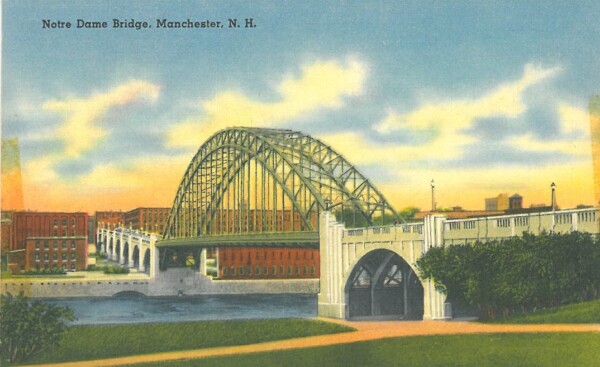
Notre Dame Bridge image courtesy of Manchester Historic Association
South Commercial Street Extension
A new roadway and bridge located south of Delta Dental Stadium will continue South Commercial Street and pass over the active railroad line. This new roadway will provide an alternative route to Elm Street during rush hour traffic and it will also provide motorists, pedestrians and bicyclists a way to cross the rail line when a train is passing through. The South Commercial Street Extension provides an alternative access point for pedestrians, cyclists, and motorists attending events at Delta Dental Stadium and the Hilton Garden Inn.
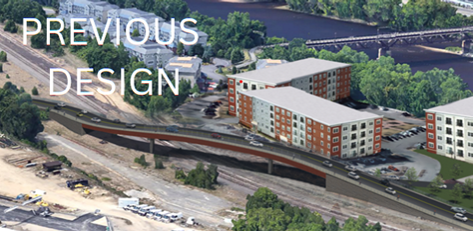
UPDATED GRAPHICS OF REVISED DESIGN:
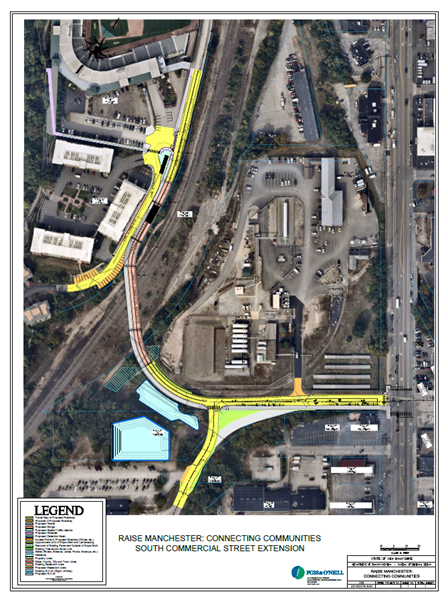
Benefits include:
- Reconnects east and west sides of rail line south of Granite Street with above-grade rail crossing
- Multi-modal bridge with accommodations for drivers, bicyclists, and pedestrians
- Reduces traffic congestion on Granite Street, including the I-293 interchange
- Provides an alternative route for event goers heading to Delta Dental Stadium or guests of the Hilton Garden Inn
- Reduces emergency response times for first responder access to the south Millyard (SNHU, Delta Dental Stadium, Residences at Riverwalk)
- Greater access to transportation options for traditionally underserved communities
- Enhances value of underutilized parcels (5.4 million square feet)
- Modern, nature-based stormwater infrastructure will be installed
Improvements Based on Public Input:
The city of Manchester has made a number of improvements to the design of the South Commercial Street Extension in response to public input we received when the initial design was presented during a December 2022 public meeting, through subsequent meetings with individuals, business and community groups and through our website.
The new design, pictured above, expands the previously 8-foot-wide sidepath to a 12-foot-wide shared-use path for nearly the entire length of the bridge, which is at least twice as wide as a typical sidewalk. The two-way shared-use path prioritizes safety and usability and is accessible to both pedestrians and cyclists.
To learn more about shared-use paths, click here.
Along Riverwalk Way, the roadway will be re-aligned, and additional parking spaces will be located under the proposed bridge for Residences at Riverwalk apartment residents.
Pedestrian and bicycle traffic can utilize the signalized intersection at Elm Street that lines up with the shared-use path, allowing for direct access to the rail trail on the eastern side of Elm Street.
Gas Street Extension / Rail Trail
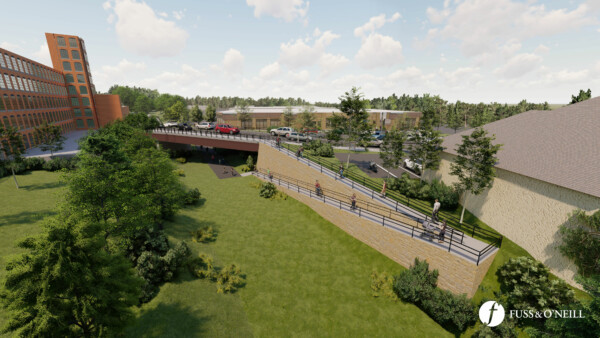
At the intersection where South Commercial Street terminates on Elm Street, drivers will be able to cross onto a new roadway on the east side of Elm, called Gas Street Extension, which will connect to Willow Street just north of the Queen City Avenue and South Willow Street intersection including a multi-modal bridge over the abandoned rail line. A section of abandoned rail line will also be paved and connected to the city’s southern stretch of the Granite State Rail Trail.
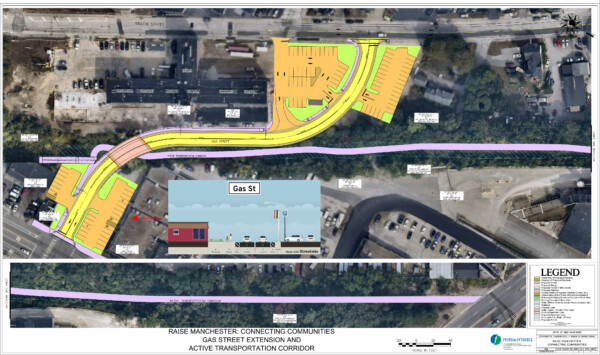
Benefits include:
- Additional traffic flow alternatives to connect Downtown and Millyard to the South Willow Street commercial district with construction of a multi-modal bridge over the abandoned railroad corridor
- Improve traffic flow with interconnected traffic signals on Elm Street
- Clean up and complete a refuse-ridden and overgrown section abandoned rail, which has become a hidden zone of undesirable behavior
- Paved path for pedestrians and bicyclists with access to adjacent parcels and connectivity to existing and future rail trails
- Creates first ever pedestrian and bicycle connection between north and south sections of the Central Business District
- Constructs an additional 0.68 miles of the Granite State Rail Trail that, when complete, will connect Lebanon to Salem across approximately 120 miles
South Willow/Queen City Intersection


By eliminating the traffic signals and installing a “peanut roundabout,” traffic will flow safely and smartly, with more options for non-motorists.
The current layout of the Queen City Avenue and South Willow Street intersection is confusing and unsafe for motorists, and does not offer any connectivity for pedestrians and bicyclists.
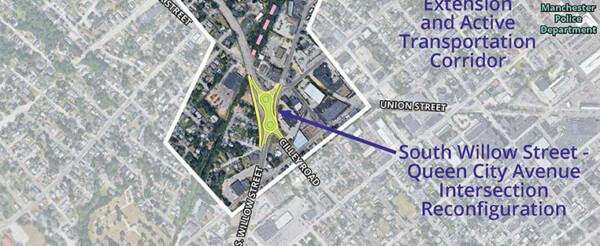
UPDATED GRAPHICS OF REVISED DESIGN:

Benefits include:
- Improves safety by reducing speeds through the intersection
- Adds crosswalks and sidepaths (currently no pedestrian crossings exist)
- Improves freight and vehicular operations by eliminating signal delay
- Reduces traffic signal delay and emissions from idling vehicles
Improvements Based on Public Input:
The city of Manchester has made a number of improvements to the design of the South Willow Street/Queen City Avenue Intersection in response to public input received during a December 2022 public meeting, subsequent meetings with stakeholder groups and through our website. The previous design was presented to the public in December 2022.
The new design, pictured above, provides a 12- to 14-foot-wide raised path to prioritize safety and usability by providing enough space for pedestrians and bicyclists. The wider path is considered a “sidepath,” which is a two-way shared pathway, at least twice as wide as a typical sidewalk.
Where the proposed rail trail meets Queen City Avenue and crosses to the proposed South Manchester Rail Trail, a Pedestrian Hybrid Beacon will be installed to allow trail users to cross the roadway safely. Pedestrian Hybrid Beacons are designed to allow protected pedestrian crossings, stopping traffic with red signal indications as needed upon activation. According to a study conducted by the Federal Highway Administration, Pedestrian Hybrid Beacons reduce pedestrian accidents and have experienced a near perfect compliance rate.
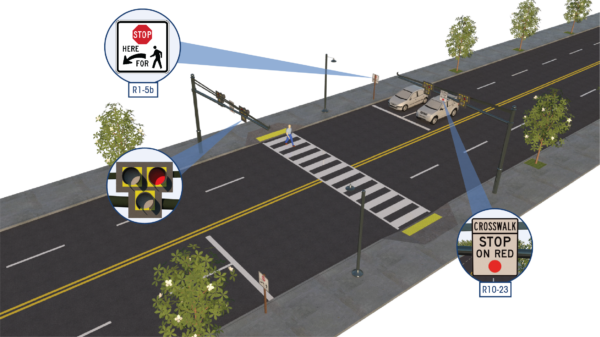
Unlike ordinary traffic lights, Pedestrian Hybrid Beacons, which have been deployed successfully elsewhere in the State at rail trail crossings, remain unlit until activated. Once a pedestrian activates the signal, the following sequence takes place:
- Flashing Yellow Lights – vehicles begin to slow down and prepare to stop
- Solid Yellow Light – Drivers should stop if it is safe to do so
- Solid Red Light – Drivers MUST stop prior to the crosswalk
- Flashing Red Light – Drivers may proceed after coming to a full stop and checking to see if the crosswalk is clear
- Unlit – Drivers may proceed without stopping
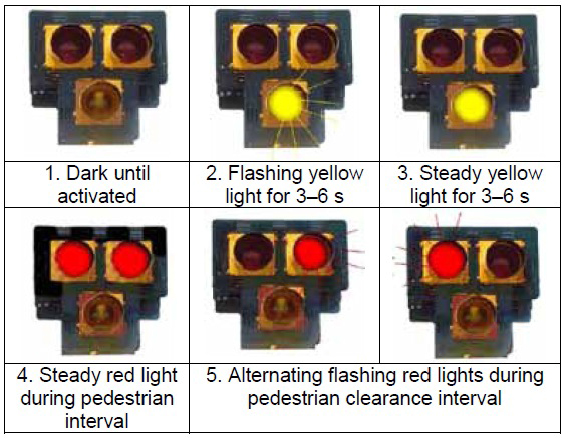
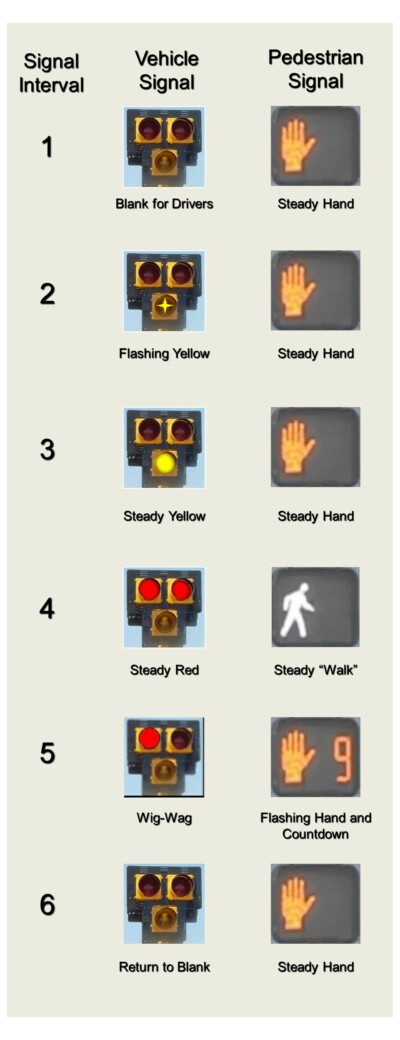
Proposed Intersection Design
Current Intersection Design
Rail Trail Connections
The project will complete a critical connection at the center of Manchester providing connectivity between the Rockingham Recreational Trail, to the Piscataquog Rail Trail, and the South Manchester Rail Trail to the Riverwalk.
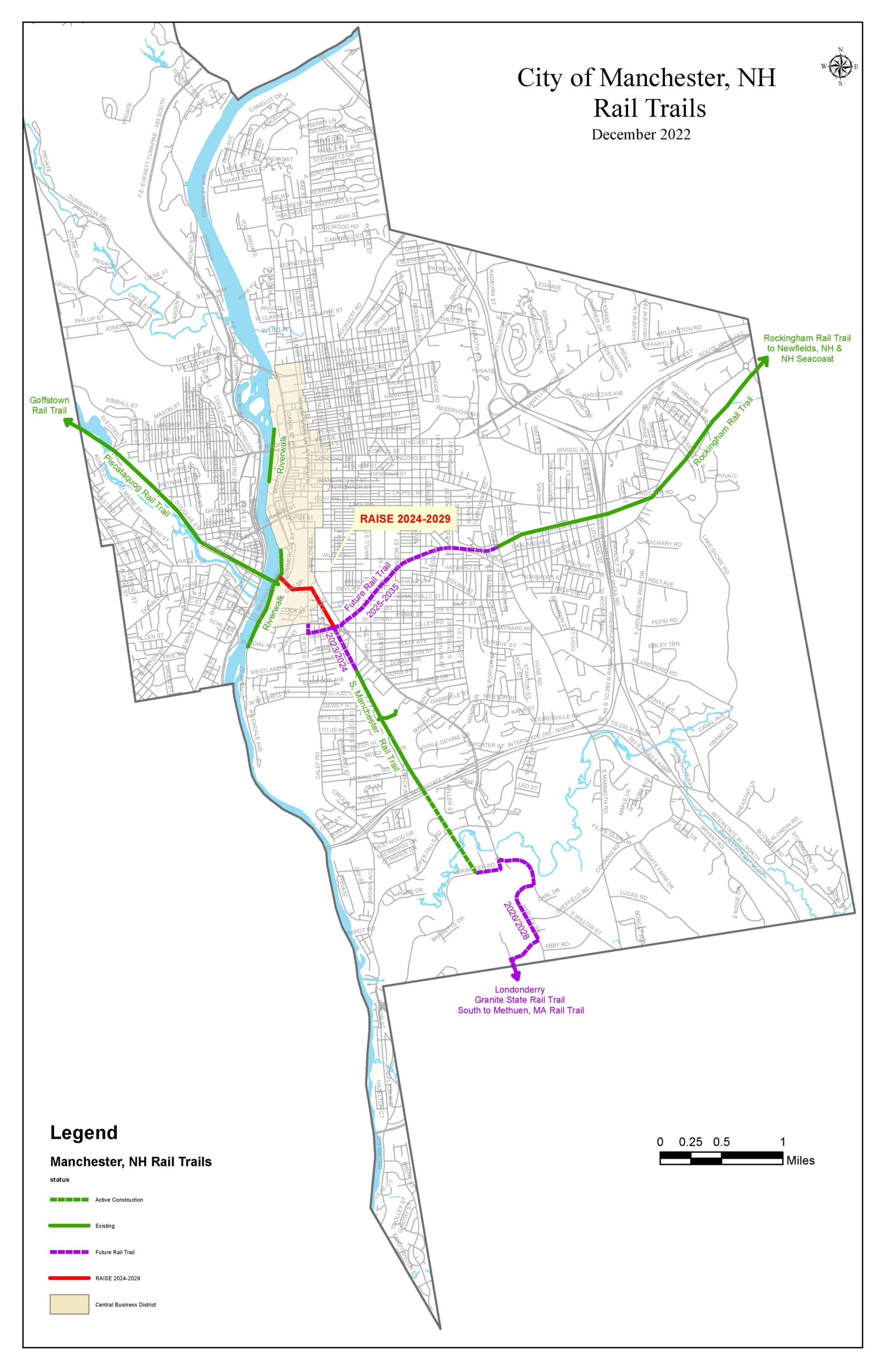
Bicycle Network Connections
The project will make significant upgrades to the city’s bicycle network connections, as seen below.
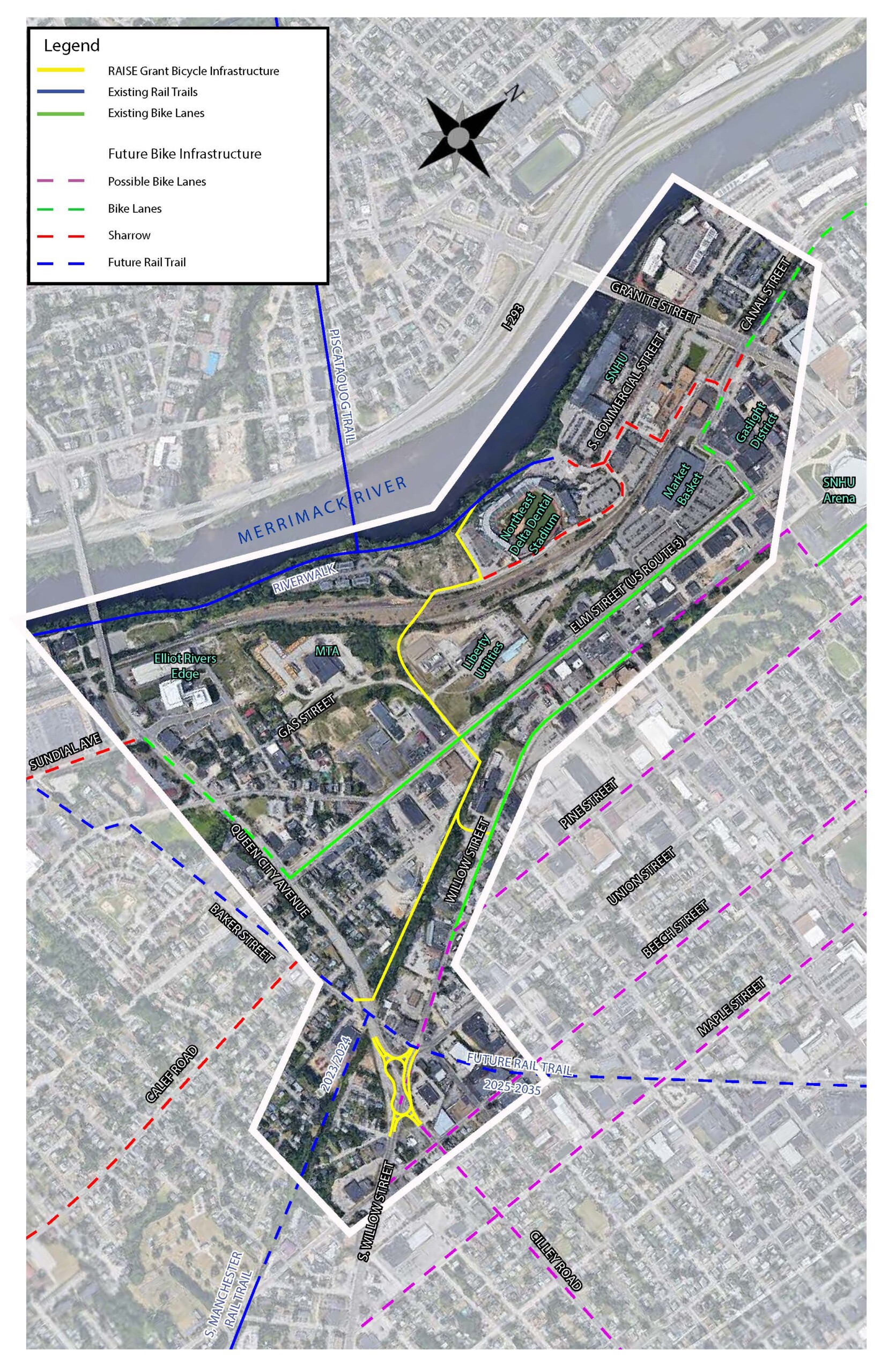
Pedestrian Network Connections
The project will make significant upgrades to the city’s pedestrian network connections, as seen below.
